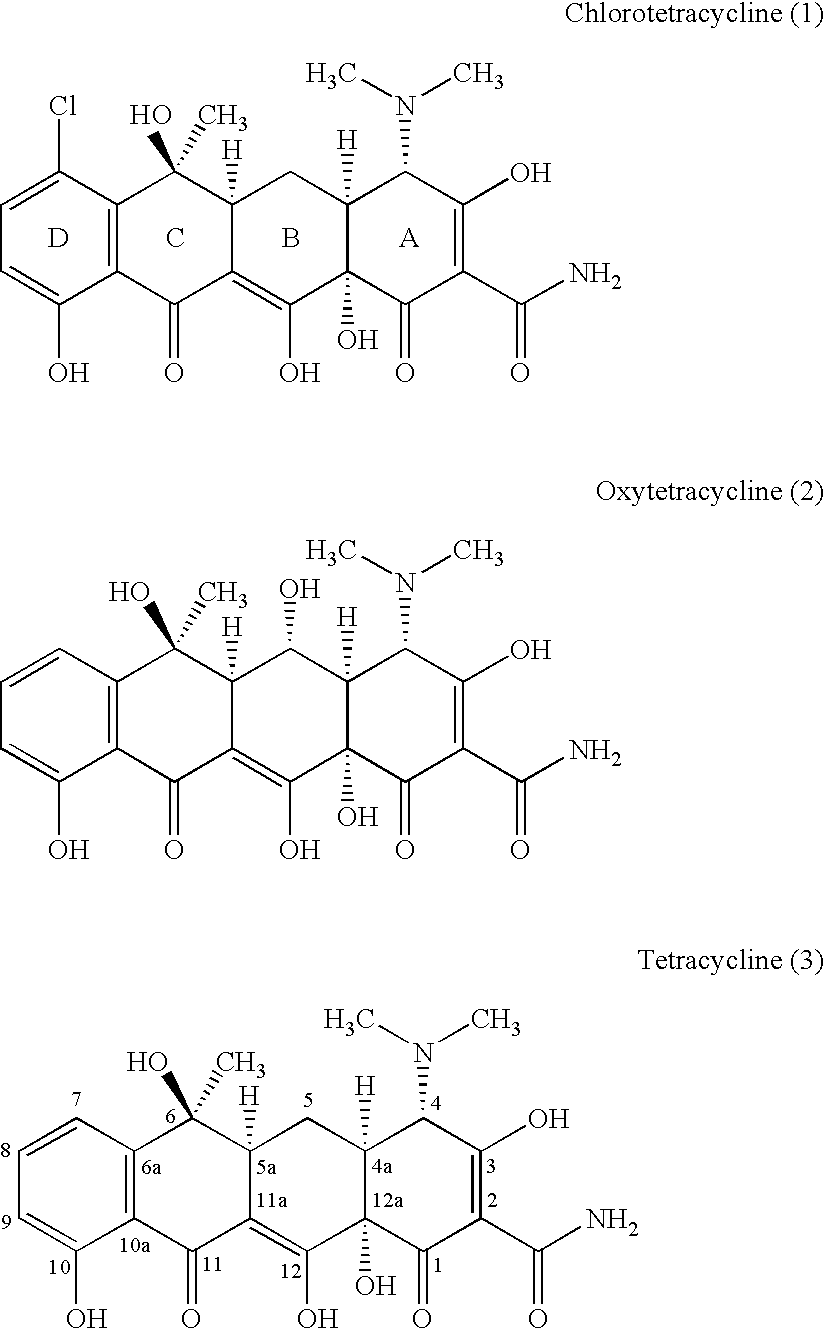Synthesis of enone intermediate
a technology of enone and intermediate, which is applied in the field of synthesis of enone, can solve the problems of affecting protein synthesis, loss of activity, and insufficient concentration of eukaryotic cells to achieve protein synthesis, and achieves the effects of improving the overall synthetic approach to tetracycline analogs, increasing the yield, and being more amenable to large-scale production
- Summary
- Abstract
- Description
- Claims
- Application Information
AI Technical Summary
Benefits of technology
Problems solved by technology
Method used
Image
Examples
example 1
Synthesis of Chiral Enone
[0245]General Procedures. All reactions were performed in flame-dried round bottomed or modified Schlenk (Kjeldahl shape) flasks fitted with rubber septa under a positive pressure of argon, unless otherwise noted. Air- and moisture-sensitive liquids and solutions were transferred via syringe or stainless steel cannula. Where necessary (so noted), solutions were deoxygenated by alternative freeze (liquid nitrogen) / evacuation / thaw cycles (≧three iterations). Organic solutions were concentrated by rotary evaporation at 25 Torr (house vacuum). Flash column chromatography was performed on silica gel (60 Å, standard grade) as described by Still et al. (Still, W. C.; Kahn, M.; Mitra, A. J. Org. Chem. 1978, 43, 2923-2925; incorporated herein by reference). Analytical thin-layer chromatography was performed using glass plates pre-coated with 0.25 mm 230-400 mesh silica gel impregnated with a fluorescent indicator (254 nm). Thin layer chromatography plates were visual...
example 2
Alternative Synthesis of Chiral Enone
[0266]General Experimental Procedures. All reactions were performed in flame-dried glassware fitted with rubber septa under a positive pressure of argon, unless otherwise noted. Air- and moisture-sensitive liquids were transferred via syringe or stainless steel cannula. Organic solutions were concentrated by rotary evaporation (house vacuum, ca. 25-40 Torr) at ambient temperature. Analytical thin-layer chromatography was performed using glass plates pre-coated with silica gel (0.25 mm, 60 Å pore size, 230-400 mesh, Merck KGA) impregnated with a fluorescent indicator (254 nm). TLC plates were visualized by exposure to ultraviolet light (UV), and then were stained by submersion in aqueous ceric ammonium molybdate solution (CAM), basic aqueous potassium permanganate (KMnO4), or an acidic solution of p-anisaldehyde in ethanol, followed by brief heating on a hot plate (˜170° C., 10-15 s). Flash-column chromatography was performed as described by Still...
example 3
Synthesis of Bromo-Isoxazole and its Use in Fragment Coupling Reaction Using Magnesium-Halogen Exchange
[0305]The synthetic route to the furan Diels-Alder precursor was further developed in order to avoid the low-temperature metalation coupling reaction. Preliminary studies indicated that an aryl iodide could undergo a magnesium-halogen exchange reaction at −20° C., which is quite reasonable for a large scale production of the Diels-Alder precursor. We found that a bromine atom could be introduced onto the isoxazole ring by electrophilic bromination at an early stage as shown in the scheme below:
[0306]
As shown in the scheme, the brominated aldehyde was subjected to enantioselective addition of the vinyl moiety using divinyl zinc and a chiral aminoalkoxide. This reaction gave the allylic alcohol in quantitative yield and >95% ee. The mesylation / displacement sequence that had worked well with the desbromo allylic alcohol worked well using additives such as methanol or trifluoroethanol....
PUM
 Login to View More
Login to View More Abstract
Description
Claims
Application Information
 Login to View More
Login to View More - R&D
- Intellectual Property
- Life Sciences
- Materials
- Tech Scout
- Unparalleled Data Quality
- Higher Quality Content
- 60% Fewer Hallucinations
Browse by: Latest US Patents, China's latest patents, Technical Efficacy Thesaurus, Application Domain, Technology Topic, Popular Technical Reports.
© 2025 PatSnap. All rights reserved.Legal|Privacy policy|Modern Slavery Act Transparency Statement|Sitemap|About US| Contact US: help@patsnap.com



